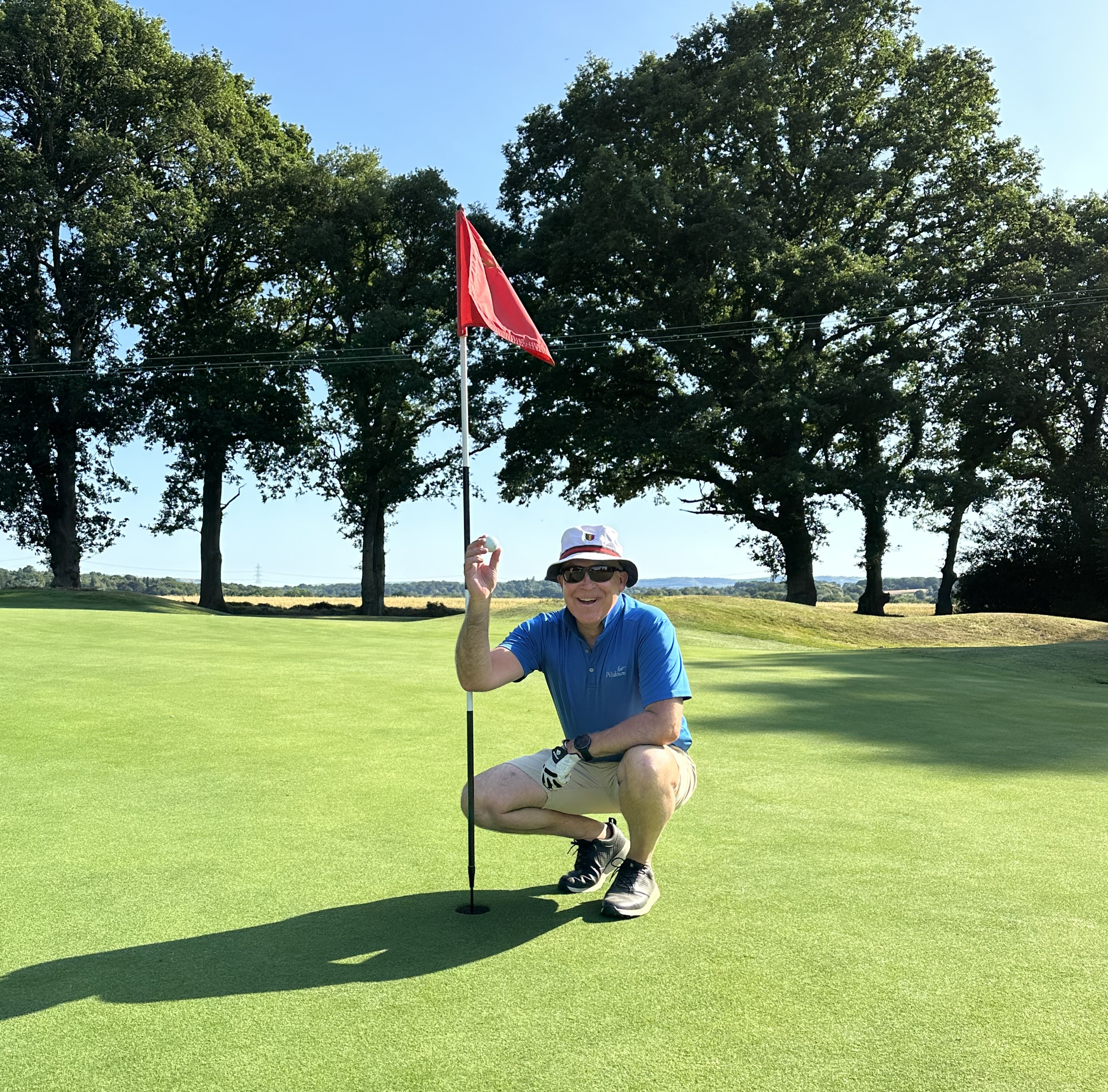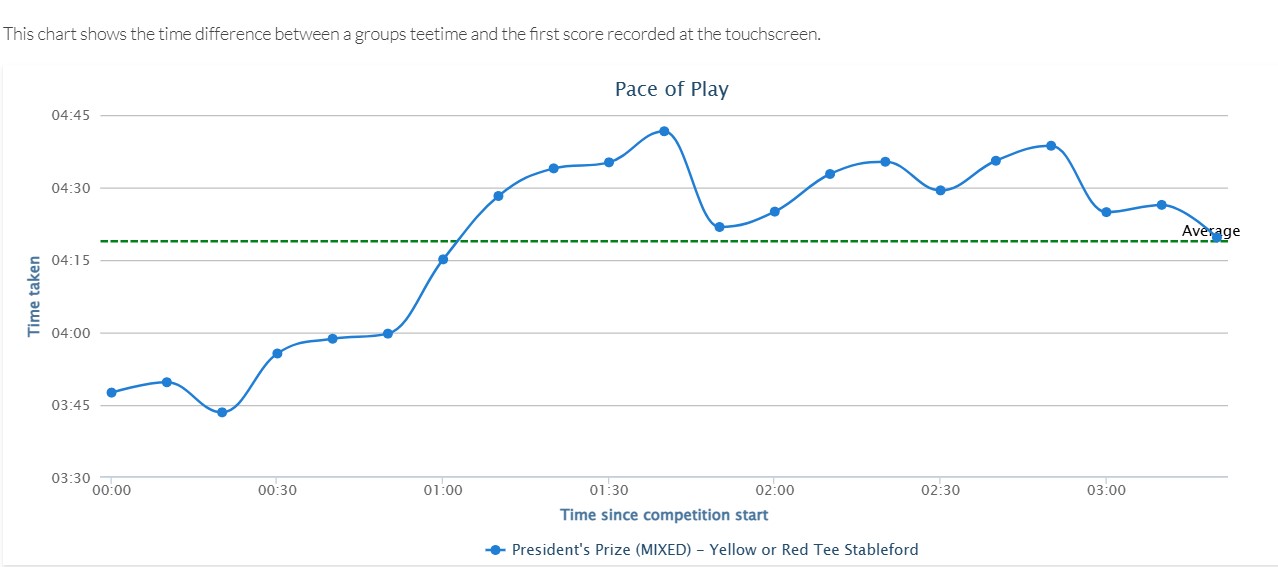4th July 2025 Newsletter
|
|
|||||||||||||||
|
|||||||||||||||
|
|||||||||||||||
|
|||||||||||||||
Pace of playWe've had lots of complaints regarding pace of play in competitions lately, (both men and ladies) and this is a problem we've been struggling to get a handle on. We've tried increasing tee time intervals, putting buffers in the middle of the field, using a starter to make sure groups tee off at the right time, to no avail. The pace of play graph below offers a telling story of how a golf competition can begin briskly and gradually descend into a bit of a trudge.
The blue line charts how long each group takes from their tee time to recording their first score on the touchscreen. The dotted green line represents the average time (just over 4 hours and 15 minutes), which several groups later in the competition exceed. In the opening half-hour or so, players are moving swiftly — times hover below 4 hours, dipping close to 3 hours 45 minutes. As time goes on (moving left to right), we see a general upward trend in the time taken — meaning pace of play is slowing down. The early groups set a good pace, but as the morning rolls on, the field slows up. By the halfway point of the competition, things have bogged down a bit. It's that classic "domino effect" — one slow group causes a queue, and from there it's impossible to recover. We can see from this which groups start to slow down play and while we don't want to name and shame repeat offenders, we may need to take action if this carries on. This is a good illustration of the effect slow groups have on an entire field. Once a group slows down, the entire field slows down. To help alleviate this, please try and follow these simple rules:
|
|||||||||||||||
|
|||||||||||||||
|








